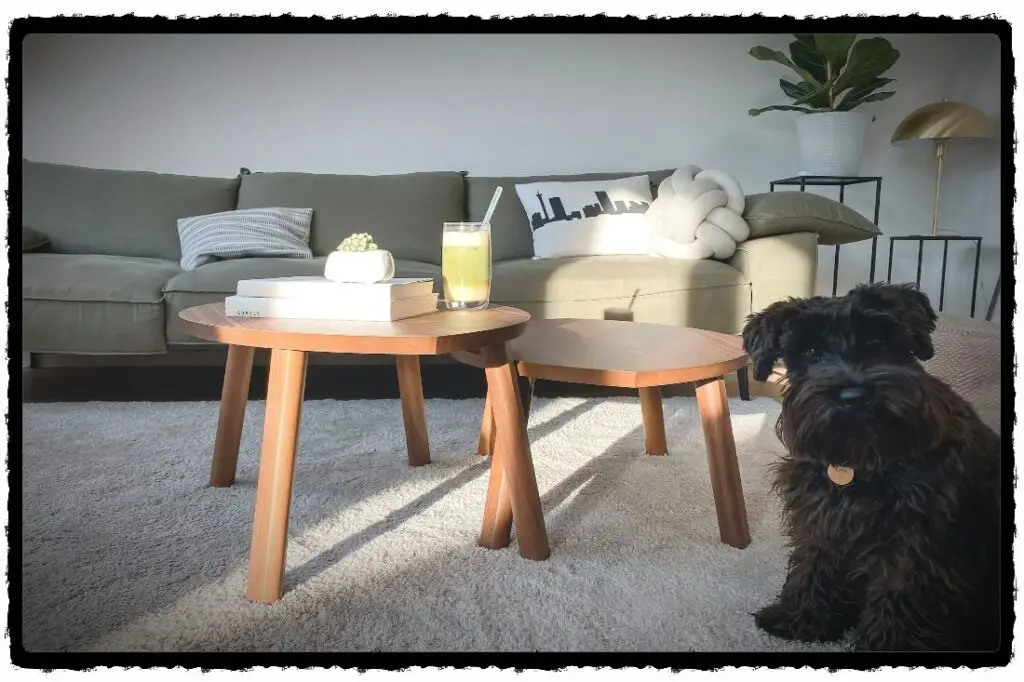Many people train their dogs to ring the bell to let the family members know that they need to pee. But if not done right, you can see that your dog is scared of the potty bell instead of using it to communicate with you.
The dog is scared of the potty bells? “Dogs are not fans of loud noises. They become scared of the potty bells because of their strange look and sounds. So it is best to develop a positive association by giving treats when introducing the potty bell. Before actually starting bell training, you should learn the right way first.”
Why Is My Dog Scared Of Potty Bells?
Dogs are not a fan of noises. Anything new, especially new sounds, can make them nervous. This is why, in our guide to dog potty bell training, we recommend
“First, make your dog familiar with the bell and its sound before training him to use it.”
Say, if all of a sudden, the dog owner shows up with a strange thing in hand and suddenly that thing starts making strange noises, the dog will get confused and nervous. Your dog will become afraid of potty bell.
So follow the right process to make him comfortable with the sounds.
My Dog Is Already Scared Of The Potty Bell, What Do I Do Now?
If you have already tried to train him to use the potty bell, but your dog is already scared of that. Now, you should hide that bell and start training with a new and different bell after a few days.
This time, be careful. Before starting to train him, read our complete guide about:
How to teach a dog to ring a bell before going potty?
You will get complete insights about when and how to use the bell. Plus, the best potty bell recommendations are also there.

How To Make A Dog Comfortable With Potty Bell And Its Sounds?
Follow these simple steps to make sure that your dog doesn’t get scared of the potty bells.
This post may contain affiliate links. Please read our full disclosure here.
1- Buy The Buzzer Bell (Not Jingle Bells)
Jingle bells are loud, and they ring with a slight movement.
So we recommend getting the buzzer bell. It’s so simple, and you can choose the tone your dog likes. You can also customize its volume according to your own requirement.

2- Introduce The Bell And Give A Treat:
At first, just show the bell to the dog and give him a treat immediately. Attach the bell to the wall in front of your dog and immediately give him a treat.
Don’t ring the bell right away. Your first goal should be to make your dog comfortable with the presence of the bell.
3- Introduce The Bell Sound And Give A Treat:
In a day or two, your goal will be to make your dog comfortable with the sound of the bell.
That is when you will realize that you have made the wise decision by buying the buzzer bell instead of the jingle bell.
Set the volume to the lowest.
Step 1:
First, show your palm to your dog and ask him to touch it with his nose. As soon as he touches it, give him a treat.
Step 2:
After that, place your hand in a position where the back of your hand touches the bell.
By pointing the finger of the other hand to the palm, ask your dog to target the palm with his nose.
As soon as he touches it, you must ring the bell with the back of your hand and give your dog an immediate treat.
Repeat this a few times.
Step 3:
When you see that your dog is no longer scared of the sound of the bell, remove your hand from the bell and point toward to bell to tell your dog that he needs to touch the bell with his nose.
As he touches it and the bell rings, give him a treat.
Repeat this a few times.
Step 4:
Congrats, your dog is now not scared of the potty bells. You can now gradually increase the volume of the bell to the level you want it to be.
4- Train Him To Use The Potty Bell To Communicate His Need:
The next step is to teach your dog to ring the bell when he needs to go.
For this, you need to be with him.
When it is time for him to go outside to pee, pick up his leash and ring the bell by yourself when you are taking him out.
Repeat this every time he goes.
After a few times, when you are taking him outside to pee, ask him to ring the bell by pointing your finger.
Your dog will eventually learn that this sound is a signal to “go potty”.
Soon, you will find him ringing the bell to communicate.
For more in-depth information like,
- When and how to use the bell training
- Teaching the dog to ring the bell
- Benefits
- Top tips
- And the best dog potty bells
Read our complete guide to potty bell train a dog.

Some Frequently Asked Questions:
Here are the answers to a few commonly asked questions about potty bell training.
Does The Bell Work For Potty Training?
A potty bell is actually not a tool for potty training. You are supposed to teach him to use the bell once he is fully potty trained. The real purpose of the potty bell is to make it easier for the dog to communicate his need to go. And YES! Potty bell training works for both the dog and the owner if done right.
Is Potty Bell Training Good For Dogs?
Bell training is good for both dog and the dog owner. It makes communication so easy and reduces the chances of potty training regression, which is very common in dogs.
However, bell training has some drawbacks too. (like everything in this world has), when your dog becomes used to ringing the bell to tell you he needs to pee, it might be difficult for him to tell you when you are outside or at someone’s home.
The best way is to train him to use the bell and go on his own too.
For this, once he is potty bell trained, keep the door open sometimes so that he can go on his own without asking you to take him outside.
Takeaway:
Dogs become scared of the potty bell because of its unknown look and extra loud noise. So the best thing is to get the buzzer bell and set the volume to a low level. Instead of bombarding him with the new sounds, introduce the dog to the bell and its sounds gradually and give him treats to create a positive association. By following the right method, your dog will be comfortable with the bell sounds, and he will eventually learn that this sound is a signal to ask for “go potty.”
Before leaving, read the full potty bell training guide to make the process much smoother and easy for yourself and your dog.
More helpful resources:






